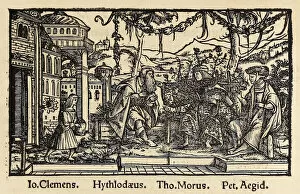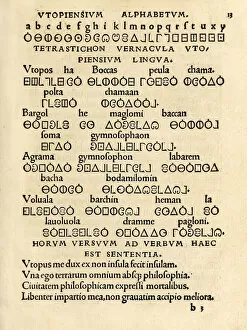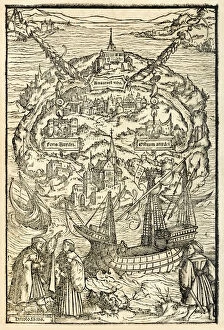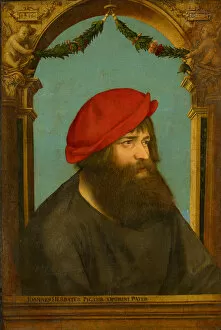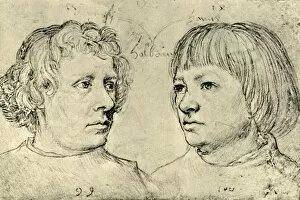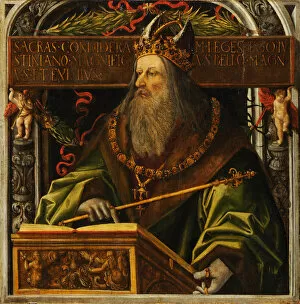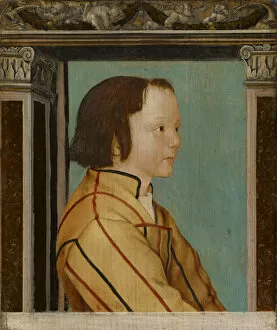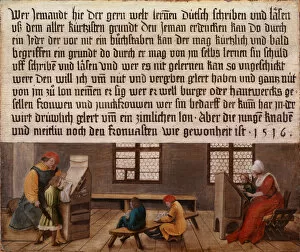Ambrosius Holbein Collection
Ambrosius Holbein, a renowned artist of the Renaissance era, left an indelible mark on the world of art with his exceptional woodcuts and portraits
For sale as Licensed Images
Choose your image, Select your licence and Download the media
Ambrosius Holbein, a renowned artist of the Renaissance era, left an indelible mark on the world of art with his exceptional woodcuts and portraits. Born in 1494 as the son of Hans Holbein the Elder, Ambrosius displayed immense talent from a young age. One of his notable works includes a woodcut featured in Sir Thomas More's Utopia, which was published in 1518. In this woodcut, Ambrosius skillfully captures the essence of More's utopian vision. The intricate details and precision showcased in his work are truly remarkable. His mastery over the medium is evident through every stroke and line that brings life to this imaginary island. Ambrosius also collaborated with his brother Hans on various projects, including their joint creation - Utopiensium Alphabetum - an alphabet designed for Utopia's third edition. Their artistic synergy resulted in a visually captivating representation that added depth to More's literary masterpiece. Apart from these collaborative endeavors, Ambrosius ventured into portraiture as well. His idealized portraits such as those of Vergil and Ptolemy demonstrate his ability to capture not only physical likeness but also inner essence through oil paintings on fir wood canvases. One striking example is Emperor Justinian's portrait where Ambrosius immortalizes the ruler's power and authority through meticulous brushwork. Additionally, he created thought-provoking pieces like "Christ interposing God Father, " showcasing his versatility by employing mixed techniques to convey profound religious symbolism. Amongst all these masterpieces lies another intriguing artwork – a portrait titled "Portrait JAorg Schweiger front. " This particular piece stands out due to its unique composition; it features parchment sheet stuck onto its surface rather than traditional canvas or wood paneling. Furthermore, one cannot overlook Ambrosius' talent for capturing human subjects with incredible detail and nuance. A prime example is seen in his portrayal of a young boy with brown hair, executed in mixed media.

